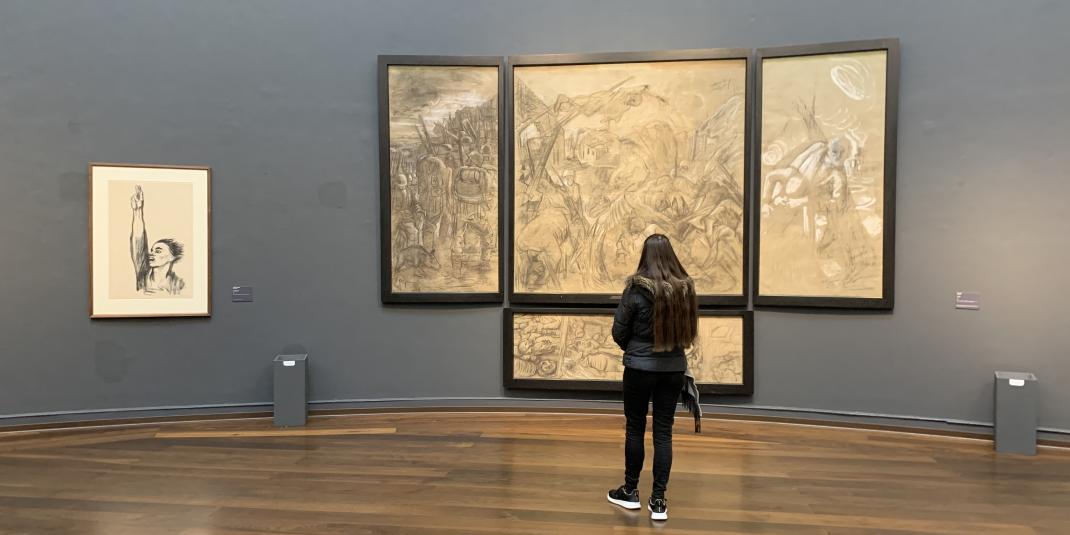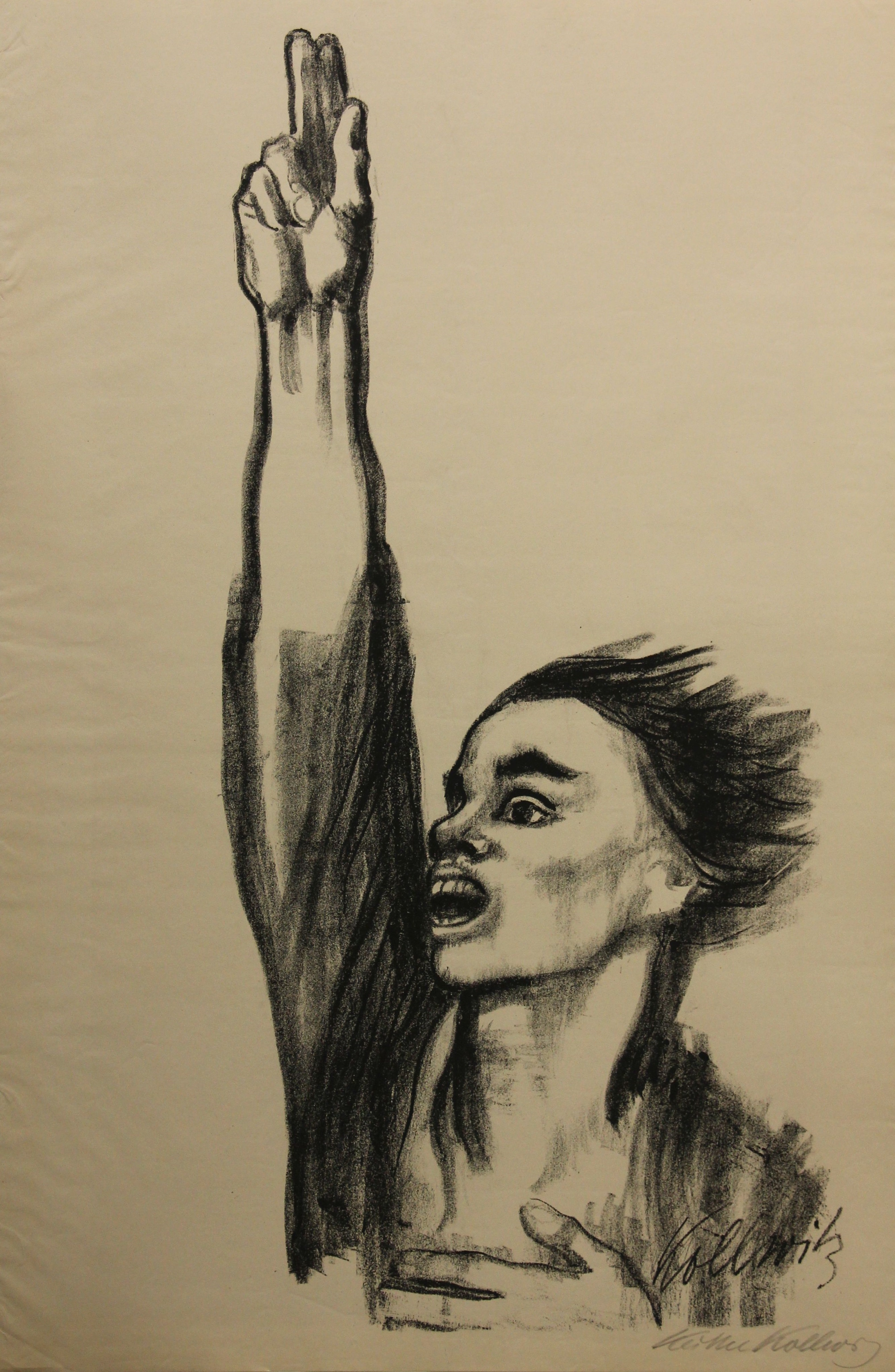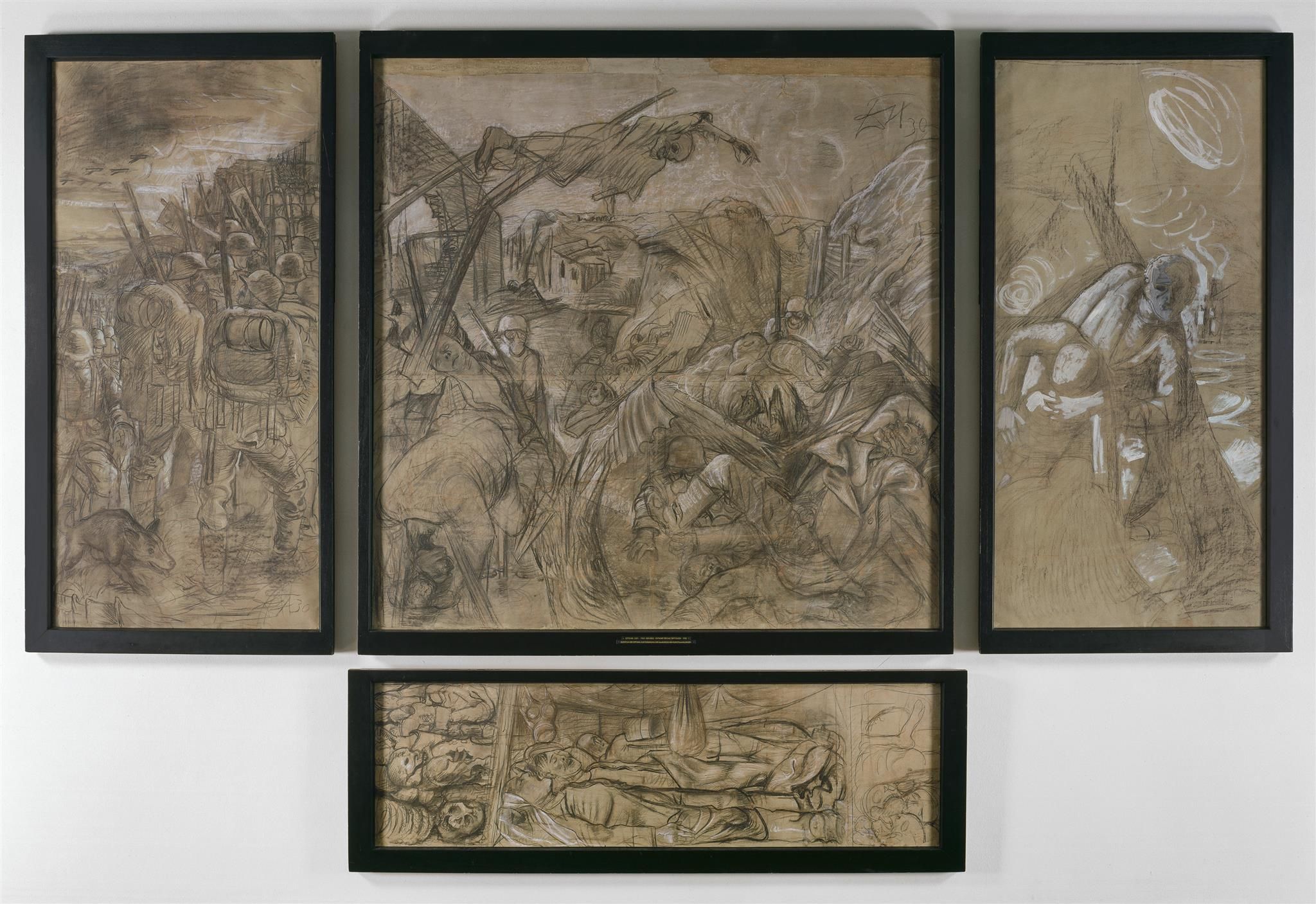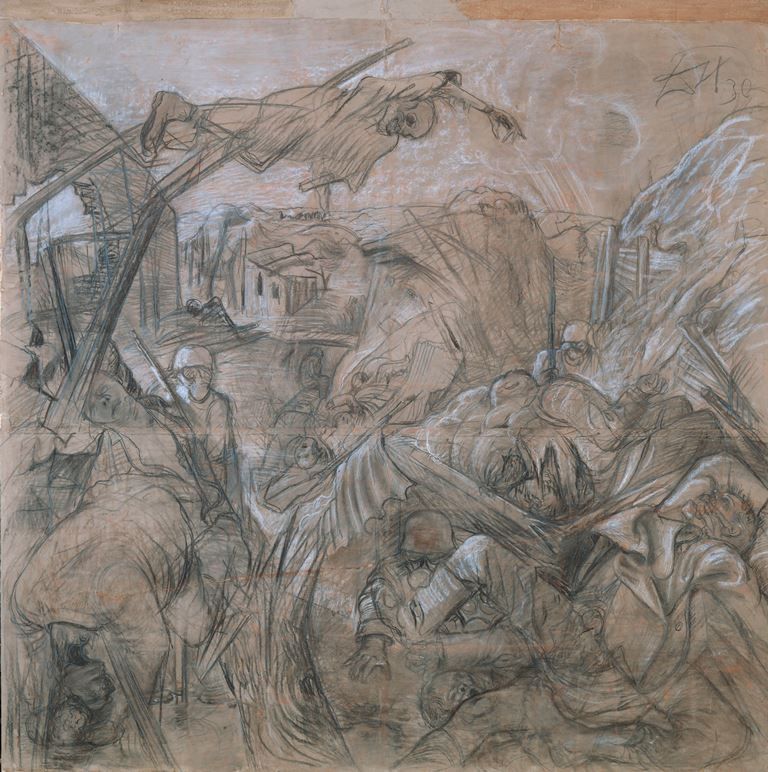

NEVER AGAIN WAR!
Russia's invasion of Ukraine on 24 February 2022 is an unjustifiable war of aggression against international law; our solidarity goes out to its people. In times like these, the voice of art and culture must speak out loudly that war must never be a means for nations to deal with each other.
The right hand is raised in an oath, the left is placed on the heart. With his mouth wide open and a tense expression on his face, a young adult in Käthe Kollwitz's composition shouts his conviction to the world. The version without lettering at the Hamburg Kunsthalle does not yet include the motto "Never again war!", which accompanied the demonstrations against the suffering caused by war, for disarmament and peaceful coexistence during the Weimar Republic. In its concentration, Kollwitz's lithograph is all the more forceful. In 1922, the socially and politically committed artist was commissioned by the International Trade Union Confederation to create a poster against war for the "Central German Youth Day" in 1924. 1924 marked the 10th anniversary of the outbreak of the First World War, which had claimed millions of victims. Never again war! was the maxim. As an incantatory appeal and unmistakable admonition, Käthe Kollwitz's design remains unbroken in its relevance to this day.
Text: Ifee Tack
Käthe Kollwitz, (1867 - 1945)
Never again war!
9990 x 655 mm
Chalk and brush lithograph
Hamburger Kunsthalle, Museum of Prints and Drawings, Hamburg
In the current situation, any kind of help is important and urgently needed. Here is a list of organisations and their campaigns where you can get involved and donate:
https://www.aktion-deutschland-hilft.de/
https://www.uno-fluechtlingshilfe.de/
https://www.savethechildren.de/
https://www.aerztederwelt.org/
https://www.malteser.de/
https://www.sos-kinderdorf.de/portal
https://www.unicef.de/
https://www.caritas.de/
https://www.diakonie-katastrophenhilfe.de/
https://www.aerzte-ohne-grenzen.de/
https://www.drk.de/
Otto Dix, »The War« Triptych, 1930
Begun 10 years after the end of the First World War, Otto Dix's triptych »The War« recalls the endless suffering and cruelty of war. The artist served as a volunteer beginning in 1914 and fought as part of a machine gun unit on the Western (France/Belgium) and Eastern (Poland/Russia) fronts. From 1929 to 1932, he condensed and processed his terrible war experiences in the triptych »The War« (New Masters Gallery, Dresden), painted in the style of the Old Masters, for which the Hamburg cardboard, which differs in motif from the executed version, forms the design. Dix deliberately chose the Christian-influenced form of the sacred altar triptych to depict the human suffering in war. On the left wing, the soldiers march to the front in rank and file, a scene that seems to resemble the carrying of Christ to the cross. On the large central panel, the inferno of the battle, in which almost everyone meets their death - hovering in the sky as an allegorical figure - is pictorially staged. The right wing shows a depiction of charity reminiscent of the Christian Pietà: a soldier rescues a badly injured comrade after a devastating attack. In the predella, following the motif of the dead Christ, the soldiers, condemned to almost certain death, lie representative of all the victims of war and remind us of the consequences and the price of violence and military conflict. Overwhelming in its visual power, the work in particular cautions against forgetting the physical and psychological trauma that war leaves behind.
Otto Dix (1891–1969)
»The War« Triptych, 1930
Charcoal, white and coloured chalk, opaque white, pencil on grey cardboard
Permanent loan »Stiftung Hamburger Kunstsammlungen«










